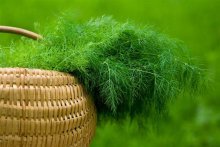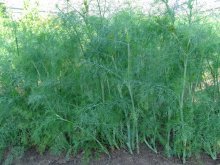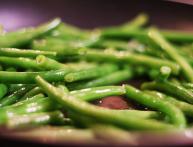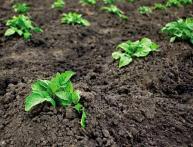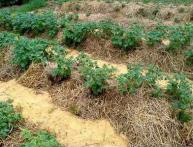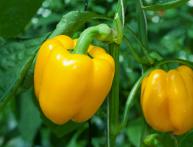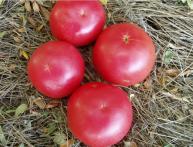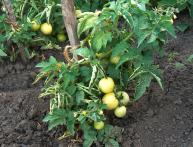How to plant dill: basic rules for planting and growing
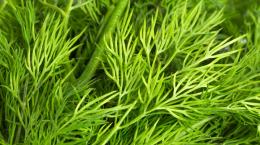
Dill is a perennial. Many people know this plant. It has a pleasant spicy aroma. But it's worth knowing how plant dill to grow good greens. It can be frozen or dried, added to salads and a variety of dishes. Dill inflorescences are also used in cooking. They are often added to vegetables when they are canned or pickled.
Content:
- What conditions are needed for growing?
- Seed preparation
- When should you plant dill?
- Winter sowing
- Plant care and dill diseases
What conditions are needed for growing?
Dill tolerates cold well; even minor frosts are not a problem for this perennial. This plant is resistant to low temperatures. Seeds can germinate at 3 degrees. But often germination is delayed, since dill contains a large amount of essential oils, and they slow down this process. It is recommended to initially treat the seeds, then they can germinate faster.
It is best that the temperature is about 15-20 degrees. Good lighting also has a positive effect on dill.
This perennial does not require excessively fertile soil. Often it has enough fertilizer that was applied the previous year for other vegetables that were grown in this place. But to get a high yield, it is recommended to plant dill in wet soils. If the plant is grown on dry land, the stem will form early, and this reduces the quality of the dill.
Seed preparation
In order for the seeds to germinate quickly, then it is worth preparing them. To do this, planting material is soaked before planting. Some gardeners initially grow seedlings and then plant them in a permanent place. But in any case, you first need to prepare the seeds. To do this, they are wrapped in cloth, which is pre-moistened. You need to make sure it is always wet.
In such conditions, the seeds should lie for about 2 days. During this time they will swell. After this, they should air dry for a third of an hour. The soil in which the seeds are planted is prepared in advance. Shoots will begin to appear after 2 weeks. During this period it is necessary to monitor the humidity soil.
When should you plant dill?
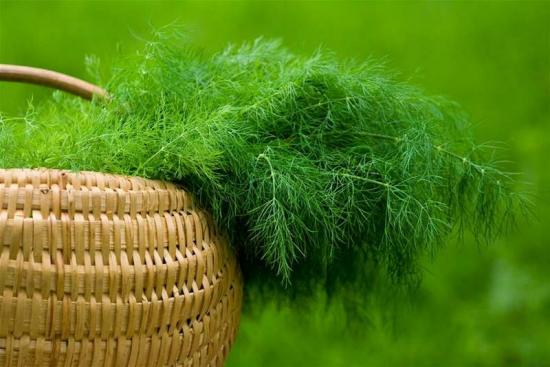
Since dill easily tolerates frost, you can plant seeds already in April, when the snow disappears from the beds. Seeds can germinate at 3 degrees Celsius, but it is better if it is already relatively warm outside.
To get an early harvest, planting can be done in early April, if the air temperature allows it. To ensure that there is always fresh greenery in the garden, it is recommended to sow the seeds every 14 days. But often experienced gardeners plant after the 20th of April.
Neutral and loose soil is ideal for dill. It is not recommended to grow the plant in heavy soil. The planting site should be prepared in the autumn. This will allow early spring sow planting material.
To plant dill, you must adhere to the following rules:
- The earth is dug up to a depth of 20-25 cm.
- Fertilizers need to be applied. For this purpose, humus and mineral fertilizers are used. This procedure is performed in the fall.
- In spring, the soil is leveled and grooves are made. Their depth should be about 2 cm.
- There should be about 20 cm of distance between each row.
- The soil is moistened. After this, you can sow seeds into it.
- The planting is covered with loose soil from above. But you should not water the crops too much, as they may go deeper.
Winter sowing
But many people want to enjoy fresh greens as early as possible. To do this, it is recommended to plant before winter. In the autumn, prepare the bed by introducing fertilizers. Sowing seeds must be done before the soil freezes.
In this case, it is worth sowing the planting material deeper than during spring planting. Before winter, the area is covered with mulch. In this case, there is no need to compact the soil. There is another way to plant. To do this, you should adhere to the following sequence:
- The bed is being prepared, the snow is being removed
- Seed material is scattered throughout the area
- The top of the soil is covered with humus and soil.
When the snow begins to melt in the spring, the seeds will go deeper into the ground and then germinate.
It is recommended to cover the bed with something in the spring. Dill that is sown before winter will appear several weeks earlier than that planted in April.
Plant care and dill diseases

After sowing, 30-40 days will pass when greenery begins to appear, which can already be picked. You can collect it in different ways. Some people pick off the entire plant, while others choose large greens. Considered the most useful dill, which has grown above 5 cm. If you do not pick the plant for a long time, it can reach up to 20 cm.When the inflorescences appear, then the dill becomes not so tasty, so it is necessary to harvest the crop before flowering.
But many gardeners leave a certain number of plants, which they use for conservation and other purposes. In addition, in the fall you can obtain seed material from them. Dill must be protected from certain pests and diseases. The main enemy of this plant is powdery mildew. It appears as a white coating on different parts of the dill. It often disturbs the plant at the end of summer, when it gets cool at night.
This leads to the fact that dill loses its taste, so it is no longer used for cooking. You should beware of Phoma, from which the plant also suffers. This is a fungal disease that causes the stems or leaves to turn black. Any person can face such problems. Diseases can appear both in greenhouse conditions and when grown in open ground.
It is forbidden to treat dill with chemicals, for this reason it is worth carrying out prevention. To do this, it is necessary to remove weeds and infected plants, and alternate planting every year with other crops. It is also useful to disinfect seeds. This is a simple procedure.
It involves warming up seeds in hot water for half an hour. So, dill is a healthy and tasty plant. It is easy to grow in garden beds. To do this, it is enough to know the basic rules of sowing and care.
Detailed video on how to grow dill:

